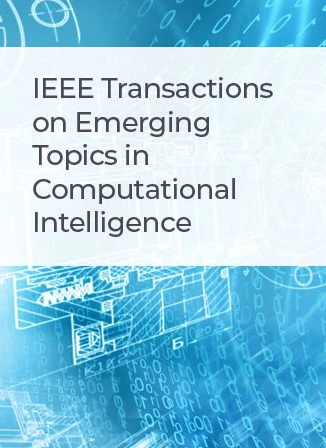Swarm Optimization With Intra- and Inter-Hierarchical Competition for Large-Scale Berth Allocation and Crane Assignment
IF 5.3
3区 计算机科学
Q1 COMPUTER SCIENCE, ARTIFICIAL INTELLIGENCE
IEEE Transactions on Emerging Topics in Computational Intelligence
Pub Date : 2025-02-19
DOI:10.1109/TETCI.2025.3529876
引用次数: 0
Abstract
The trend of global economic integration has fostered the prosperity of the maritime transportation industry, which has placed higher demands on the construction of automated container terminals, and the optimization of the integrated berth allocation and crane assignment problems (BACAPs) is a key link. Currently, population-based computational intelligence methods have attracted attention on BACAPs, but on small-scale cases and simplified problem models. In this paper, we propose a novel swarm optimization with intra- and inter-hierarchical competition (I2HCSO) for addressing large-scale BACAPs, which is a major challenge in container terminals. First, we construct a hierarchical model with better particles at the higher hierarchy, and the populations at different hierarchies are divided into several sub-swarm. Then, we design an intra- and inter-hierarchical competitive mechanism to balance the exploration and exploitation of the population, in which intra-hierarchical competition is carried out within sub-swarm at any hierarchy, whereas inter-hierarchical competition occurs in different sub-swarms of neighboring hierarchies. Third, we consider optimizing the priorities of vessels for efficient use of resources berth and crane for the first time in BACAPs and employ大规模泊位分配与起重机分配的群内与群间竞争优化
全球经济一体化的趋势促进了海上运输业的繁荣,这对自动化集装箱码头的建设提出了更高的要求,而综合泊位配机问题(BACAPs)的优化是其中的关键环节。目前,基于群体的计算智能方法主要关注bacap,但主要集中在小尺度案例和简化的问题模型上。在本文中,我们提出了一种新的具有内部和内部竞争的群体优化(I2HCSO)来解决大规模bacap问题,这是集装箱码头面临的主要挑战。首先,我们构建了一个层次模型,在层次越高粒子越好,并将不同层次上的种群划分为几个子群。然后,我们设计了一个层级内和层级间的竞争机制来平衡种群的开发和利用,其中层级内的竞争发生在任何层级的子群内,而层级间的竞争发生在相邻层级的不同子群中。第三,我们首次在BACAPs中考虑优化船舶优先级,以有效利用泊位和起重机资源,并使用$\varepsilon$-约束来搜索可行区域。此外,我们开发了一个本地搜索算子作为修复策略,以提高解决方案的质量。最后,我们在一组由25个bacap组成的案例中测试I2HCSO。与实验结果比较,I2HCSO在不同规模的bacap上具有更强的竞争力。
本文章由计算机程序翻译,如有差异,请以英文原文为准。
求助全文
约1分钟内获得全文
求助全文
来源期刊

IEEE Transactions on Emerging Topics in Computational Intelligence
Mathematics-Control and Optimization
CiteScore
10.30
自引率
7.50%
发文量
147
期刊介绍:
The IEEE Transactions on Emerging Topics in Computational Intelligence (TETCI) publishes original articles on emerging aspects of computational intelligence, including theory, applications, and surveys.
TETCI is an electronics only publication. TETCI publishes six issues per year.
Authors are encouraged to submit manuscripts in any emerging topic in computational intelligence, especially nature-inspired computing topics not covered by other IEEE Computational Intelligence Society journals. A few such illustrative examples are glial cell networks, computational neuroscience, Brain Computer Interface, ambient intelligence, non-fuzzy computing with words, artificial life, cultural learning, artificial endocrine networks, social reasoning, artificial hormone networks, computational intelligence for the IoT and Smart-X technologies.
 求助内容:
求助内容: 应助结果提醒方式:
应助结果提醒方式:


